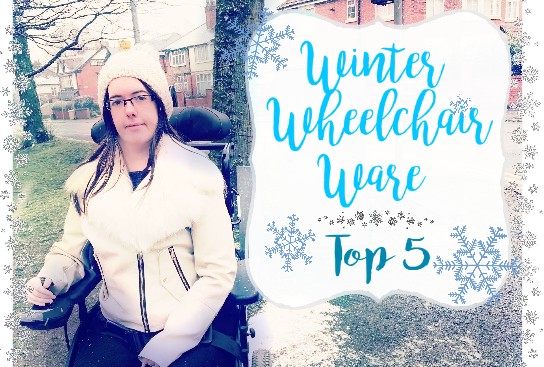As winter is in full swing I and many other people with disabilities are having to think outside the box to keep warm out and about. I know what you’re probably thinking. What’s the big deal? Throw on a big padded coat and a hat and away you go. Surely this isn’t worthy of writing about. If you’re able-bodied and reading this, you may not be aware that people with mobility problems and particularly muscle-wasting conditions (such as muscular dystrophy), feel the cold 10 times more than someone without. Mobility issues cause poor circulation, especially in the legs. Wheelchair users are particularly at risk. That’s why you see older people in their wheelchairs with the trademark tartan blanket over their legs.
If you walk, you keep your body relatively warm by just doing your usual day-to-day activities because you’re constantly moving around. Those with muscle-wasting conditions have the added freeze factor (if you will) of not having the muscle bulk that insulates us. A doubly “cold blow” you might say. But there are some things you can do to help keep you warm with a physical disability or chronic illness in the winter months. Here are my top five methods and clothing items that will keep you toasty, stay practical and not scream “disability.”

1. Thin fitted coats with fur/fleece linings to avoid the giant marshmallow effect.
Although heavily padded winter coats are the most popular and effective at keeping a person warm, the lack of flexibility in the poofy chambers ends up physically restricting arm and trunk movement. If you find this to be true, a good alternative to these marshmallow effect winter warmers is to browse for something that’s more of a jacket style, but incorporates a thin (yet thermal!) fleece/fur inner lining for added insulation without the bulk.
2. Mitten gloves!
Mittens are actually in fashion now in 2018 for adults (not just the littles!), which is a bonus for those with dexterity challenges. If you’re like me and need to wear gloves right from the first day of autumn to stop numbness spreading through your hands and fingers, rendering them useless, you need to get yourself a pair of mitten gloves! The great quality about these is you no longer have to battle to take them on and off to use your phone. Simply un-flip the mitten flap and your fingertips are free to update your Facebook status to your heart’s content. Flip the mitten back over and away you go!
3. You lose body heat through your head.
This one’s self-explanatory. Succumb to the knit faux fur bobble hat trend! You could have an array of different styles and colors if you don’t want to blend in with the crowd.
4. Thermal/fleece and shoe linings.
As a wheelchair user, my legs are the biggest cold suckers. I also have “corpse feet” (shout out to Carrie Aimes for coming up with that term!) Little did I know you can get fleece lined leggings/jeggings/jeans and they don’t look extra bulky on like I was concerned about. Lined boots are a good alternative to heavy snow boots or frostbite-inducing Converse. The less weighty yet insulating the footwear is, the better, particularly for those with walking difficulties.
5. Layer, layer, layer!
Contrary to your initial thoughts that layering may present a “bulk” issue all on its own, I’ve found it’s actually more practical mobility-wise to wear multiple thin layers rather than wearing one big bulky item of clothing. Heat gets more trapped within layers than one garment, and it gives you the option to shed layers to accommodate your changing environment over the course of the day. Getting too hot is equally troublesome!
This story originally appeared on Life of an Ambitious Turtle.
Getty image by Colobus Yeti.

